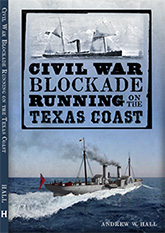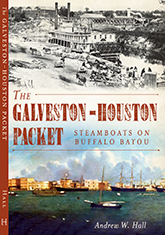Is this Captain Henry Gadsden of the Transport Arago?
If you’ve read much about the U.S. Navy in the Civil War, you’ve probably come across this much-published image:


![]()
Sometimes this image is identified as being David Dixon Porter (see here, and here, and here), but that’s almost certainly wrong. Apart from the full, bushy beard, it doesn’t much look like him, the build is wrong (Porter was not a pudgy guy), as is the sleeve braid — in fact, it doesn’t follow any of the sets of uniform regulations that applied during the war for line officers.
Well, I think I found him — he’s the officer conducting gun drill aboard the chartered Army transport Arago:
![]()
![]()
Check out the irregular spacing between the top stripe and the lower set on the left cuff.
What do you think? Same dude?
The Library of Congress caption identifies the ship with the prefix “U.S.S.” Arago, but that’s incorrect — she was never formally commissioned into the U.S. Navy. Arago was a big, ocean-going sidewheel steamer, launched at New York in 1855. She was 285 feet long, with a beam of just over 40 feet. Her iron-framed paddlewheels were 33 feet in diameter.
![]()

![]()
Arago probably would have spent her career running between New York or Boston and Europe, but in 1862 she was chartered by the U.S. Navy to hunt down the Confederate ironclad Virginia (Merrimack). The timely arrival of the U.S. Navy’s warship Monitor at Hampton Roads on the night of March 8-9, 1862 would put an end to the threat posed by Virginia, and Arago spent most of the rest of the war under charter to the U.S. Army, transporting men and supplies up and down the eastern seaboard. In July 1863, Arago even captured a blockade runner off the Carolinas, which must have been an extremely rare occurrence for a chartered merchantman. Although she was an important part of the Union’s logistical effort, as far as I can tell Arago was never a commissioned warship, or directly owned by the U.S. government.
But back to the man supervising gun drill on the steamer’s deck. Can he be identified? There is a candidate, Arago‘s master, Henry A. Gadsden. Captain Gadsden appears to have been in command of the ship for much (or perhaps all) of her wartime service. He was in command of her before the war, on the route between Harve, France, Southampton, United Kingdom, and New York. He was in command when Arago took the blockade runner in mid-1863, and finally, in April 1865, when the ship brought back from Charleston the U.S. Secretary of War’s delegation to the ceremonial raising of the U.S. flag over Fort Sumter. (Arago‘s apssengers on that trip included Generals Robert Anderson and Abner Doubleday, both veterans of the Sumter bombardment in 1861, N. H. Swayne, an Assiciate Justice of the Supreme Court, and numerous other members of Congress and government officials.) While I cannot say for sure that his command of the ship was continuous from 1861-65, it might have been.
Is the man with the cuff stripes, the one photographed by the rail with the telescope under his arm, and photographed again supervising gun still on the ship’s main deck, the Arago‘s master? It certainly seems plausible. If so, it’s likely Captain Gadsden himself.
I’d sure like to find out.
__________






Chartered to hunt down the CSS Virginia? An unarmored sidewheel steamer, which was — AFAICT from those pictures — armed with cannon which would have been pitifully ineffective against an ironclad? And the Federals knew exactly where the Virginia was, no hunting necessary. I don’t think anyone expected her to hide, either, if she got past the Navy at Hampton Roads. The whole thing seems pretty crazy to me.
Just like anyone mistaking that for a picture of Admiral Porter. Besides the obvious dissimilarity in body types, the nose and cheek are completely different: Porter has a long nose and a prominent fold above the mouth/below the cheek bone, while the man in the picture has a short, slightly upturned nose and a flat cheek.
I think you’ve probably got it right by identifying this as a photo of the Arago’s master.
Yes, to be used against CSS Virginia. I was sloppy in my writing and erred in saying that this was before the Confederate ironclad’s encounter with USS Monitor, when in fact the episode was concurrent and immediately following, but it happened. It’s a sign of just how rattled and panicky Washington was over the prospect of Virginia getting loose. The intent, evidently, was to ram Virginia. Arago’s civilian crew were none too happy about it, that there was something of a mutiny on board, detailed at this website:
http://www.navyandmarine.org/ondeck/1862mutiny.htm
Here’s a letter from Captain Gadsden to the Flag Officer Goldsbotough of the NABS outlining the dissatisfaction among his crew:
Crazy times.
That makes a bit more sense. The Arago’s only advantages would have been speed and maneuverability. Which would have lasted just about as long as it took the Virginia to put a shot through something vital. Hard to blame a civilian crew for looking a bit askance at the prospect.
It certainly says something about how the authorities must have regarded the outcome of the clash between the ironclads. In private, anyway.
Great detective work with the photo comparisons, Andy. The really interesting story here is how the US Navy expected the Arago to tackle or at least delay the formidable ironclad Virginia. As you state, it possibly suggests some of the desperation on the part of War Department officials to get as much water-borne firepower as possible to Hampton Roads before the Virginia set sail & fortunately for Captain Gadsden and his crew, the encounter never occurred. Thanks for the informative post!
A sextant exists in England having an ivory handle with a mounted silver plaque bearing the following inscription – presented by the British Government to Captain Gadsden of the American Steamer ‘Arago’ in testimony of his humanity to the crew of the brigantine ‘George’ of St. Johns Newfoundland in January 1866.
Does anyone know more about this incident?
I don’t know anything about it, but now I’m intrigued!
When the British Government chose to award Captain Gadsden with a sextant I assume consideration was given to it’s style and quality.
The chosen example a “Double frame pillar” type sextant/quintant made to a design attributed to Edward
Troughton in 1788. Even in it’s day it was considered to be labour intensive and expensive to produce.
The scale (divided -5 to 145 upwards) and vernier are both made using “Platina” this being a valuable non
tarnishing metal benefiting the reading of calibrations.
The Ivory handle has a tarnished silver plaque mounted with flush pegs on the inner surface, this plaque
bears the beautifully hand engraved inscription previously referred to. Some of the letters being formed
across the securing pegs indicating that this engraving was done prior to the handle being assembled to the
completed instrument by the maker Troughton & Simms of London.
The combination of these refinements suggest to me that this is a commissioned instrument indicating
respect and gratitude towards the recipient,
Unfortunately as the instrument exists today it is without a horizon scope and vernier magnifier
assembly. It is uncleaned and in fact appears dirty and neglected. Minor traces of original lacquered
brass are evident. All things considered it could be restored to it’s former glory.
In conclusion I guess it’s historical association is more important than it’s present condition.
Pictures are available should you require but an Email address would be needed in order to post.
Martin Webb will enter sextant details in the near future
I saw the sextant online. I haven’t located any details about the incident, and have not definitively identified the brigantine George — there were at least two out of Newfoundland in that period.